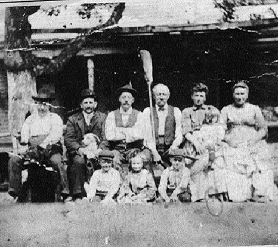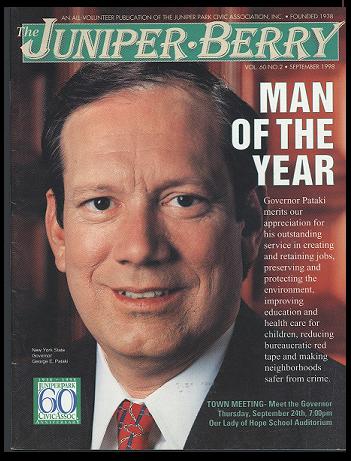The area now called St. John’s Cemetery was once called the Hempstead Swamp. Lands were allotted and clearing and draining began about 1670.
On August 8, 1879 the Rev. John Loughlin, the Roman Catholic Bishop of Brooklyn, bought the Mills Farm for $44,000. On September 6, 1879 the property was transferred to the newly organized St. John’s Cemetery. Shortly after surveyors went to work projecting plans for roads and burial plots.
In November, 1880 John Schneider, a Middle Village resident, was appointed Superintendent of St. John’s.
Timothy Moloney was given a contract to start fencing in the cemetery. In March of 1881 laborers were hired for grading and laying out plots for burials. Supt. Schneider was in charge of the dirt roads. Several layers of crushed stone were laid on the roads.
On September 3, 1881 the Middle Village and North 2nd Street Railroad – without having a permit to do so – started laying ties and track to extend their horse car railroad to Dry Harbor Road. The Highway Commissioners of Newtown took them to court. But the Supreme Court threw the case out.
The cemetery was dedicated on November 20, 1881. Rt. Reverend Bishop John Loughlin sent his vicar general, Rev. Keegan to perform the solemn ceremony of blessing the ground where the bodies of the dead were to rest. He was accompanied by the Rev. Zimmer of Middle Village, Rev. Paulesgi of Astoria and Rev. Dauffenbach of Winfield.
Timothy Moloney died before finishing the fence work, so Dennis Cowhey was awarded the contract. In June 1882 the Middle Village and North 2nd Street Railroad started operating horse cars to the main gate of St. John’s Cemetery. It was a shuttle service and people were charged an extra 3 cents. The last spike to complete the extension to Dry Harbor was pounded home by Henry Closius, who was a Town Assessor for the township and who lived in Middle Village.
After John Schneider died in 1891, John F. McCloskey was appointed Superintendent. When Dennis Cowhey completed the fencing, school children who attended Whitepot School could no longer take the shortcut through the cemetery grounds.
In 1904, the Cemetery filed for a building permit to erect a two story brick office building on the corner of Metropolitan Ave. and Dry Harbor Road at a cost of $29,000. The cemetery authorities also voted to spend $50,000 for more grading and laying out a new section of the property.
The first section of St. John’s Cemetery was opened in 1880. The second section was opened in 1933 south of Metropolitan Avenue. the last section was an old farm acquired in 1947. It’s boundaries were Dry Harbor Road, Furmanville Avenue and Woodhaven Blvd.
By 1913 John McCloskey, Jr. was working with his father, and was Assistant Superintendent. Eventually he succeeded his father as Superintendent.
St. John’s Cemetery has several “Godfathers” buried in the plot north of Metropolitan Avenue, including Joseph Porfaci, who died of cancer in 1962; Charles “Lucky” Luciano who died of a heart attack near Naples, Italy in 1969; Vito “Don George” Genovese who died in prison in 1969 (reportedly he had arranged for the “hit” against Frank Costello which was to Genovese); Joseph Columbo who was shot in 1971; Carlo Gambino who died of a heart attack in 1975; and Carmine Galente who was killed in 1979.
St. John’s Chapel was built in 1953 near Metropolitan Avenue. It was primarily intended for prayer and meditation by cemetery visitors. Seating 160 persons, the building has an exterior of seam-face granite with limestone trim and slate roof. Stained glass windows in the nave depict 20 episodes in the life of Christ. The cost of the chapel was around $235,000. In 1953 it received a Bronze Plaque – Building Award – for Religious Buildings.
The last sale of graves in St. John’s was in 1989. Msgr. George Mooney, Director of the Catholic Cemeteries Office, said that the three year old Resurrection Mausoleum in St. John’s has used only a third of its 3,000 crypts. A small parcel of land within St. John’s Cemetery may be developed at some time in the future, adding about 1,000 grave sites.
Recently, Father Michael J. Reid, the new Diocesan Director of Catholic Cemeteries, announced that new graves are now available at St. John’s Cemetery in Middle Village.




